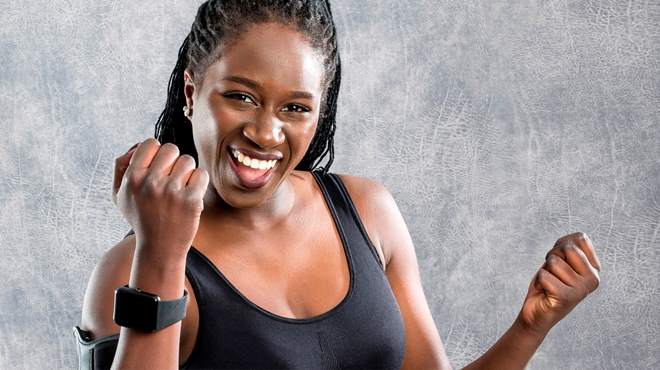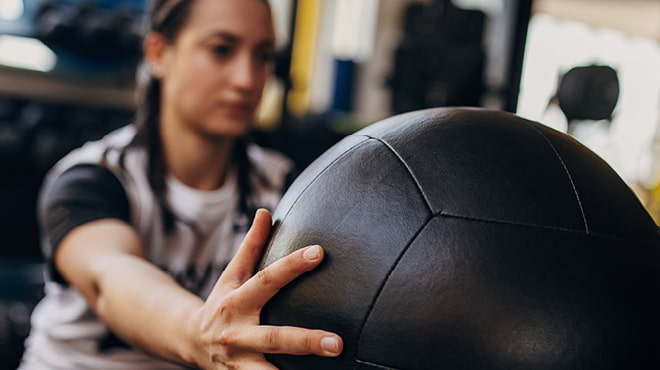Recent Posts
Planning for your big run

You've thought about it for years. You've dreamed of crossing the finish line. It's on your bucket list, or maybe it's become a tradition. You've registered for a long-distance race like a 5K, 10K, half-marathon or marathon. So now's the time to plan and prepare for your big day.
This critical process will be shaped by your experience and fitness level. First, get real and be honest with yourself. It can take eight to 12 months to go from the couch to a full marathon. For some people, it may be a better choice and more realistic goal to plan for a shorter race, like a 5K or half-marathon.
For first-time runners or those looking to restart after taking time off, keep these tips in mind as you plan and prepare for your first big run:
Assess your fitness level
If you're just starting a running program, you should meet with your primary care clinician and other health care professionals, such as a physical therapist or athletic trainer. They'll assess your heart and lung capacity and if your body can handle the rigors of long-distance running.
Pick a training program
If you've run long-distance races before, you might want to try a different plan this time around. Variety can help maintain motivation. If you encountered issues during your previous training or race, it's time to shop around and find a plan that works best for you.
For new runners, your plan should include:
- Adequate time to train
You can complete 5K or 10K training in a few months. For first-time marathon runners, training can take up to a year to build up your tolerance and endurance. - Cross-training
To avoid injury, your plan should include cross-training — combining weight training, plyometric and other cardiovascular activities, such as biking, rowing or swimming, with your running routine. For rookie runners, a training program that includes a regimen combining running and walking can help you gradually build up endurance and strength. - Strength training
Every running program should have a strength training component. This will reduce the imposed loads on your body and prevent overuse injuries, such as tendonitis and stress fractures. Core and hip strength are some of the most important areas to work on. - Active warm-up
To improve performance, you should spend five to 10 minutes of walking or light jogging, along with movements that cover the full range of motion, such as lunges. - Stretching
Static stretching hasn't been shown to improve performance or reduce injury, but it can feel good after a run, especially if stretching is already part of your usual routine. Stretching can improve range of motion, as well. - Recovery
Help your body recover with adequate rest in between sessions of exercise. However, consistency is essential to continue improving your endurance. Novice runners will want to avoid the same exercise multiple days in a row until they build up their tolerance. - Healthy eating
Quality plans also include nutrition and hydration recommendations. Not only are you eating and drinking for optimum overall health, but you also need these nutrients to support the changes in your body brought on by running.
No matter which training plan you choose, listen to your body, which at times will speak to you loud and clear. The idea of "no pain, no gain" is incorrect. If you have swelling or pain that worsens, don't just power through and follow your plan. Get the problem checked out and be prepared to adjust. Every plan can be modified to meet your needs. While it's common to have muscle soreness after increasing distance, running shouldn't be painful.
Choose the right running shoes
Now that you've decided to start adding up the miles, it's important to have the right shoes for the job. Evaluate your feet so that you get the right shoe. Do you have flat feet or a high arch? Each foot type requires a different type of shoe to provide support and reduce the risk of injury.
If you're not sure about your foot arch type, dip your foot in water. Then step on a piece of cardboard and examine the footprint that remains. After examining the footprint, use our chart to determine your foot arch.
When you buy shoes is vital. When you first start training, invest in a new pair, and don't rely on a pair you've had for a while. The older pair will break down too quickly and not provide the support your feet need. A good shoe for long-distance runners typically lasts 300-500 miles. Some runners make the mistake of buying a new pair of shoes right before a race. Instead, buy them a few weeks before the race so you have time to break them in.
Now it's time to lace up and start training. Good luck!
Troy Hoehn is a licensed athletic trainer in Orthopedics and Sports Medicine, and Peter Johnson is a physical therapist, both in Mankato, Minnesota.





